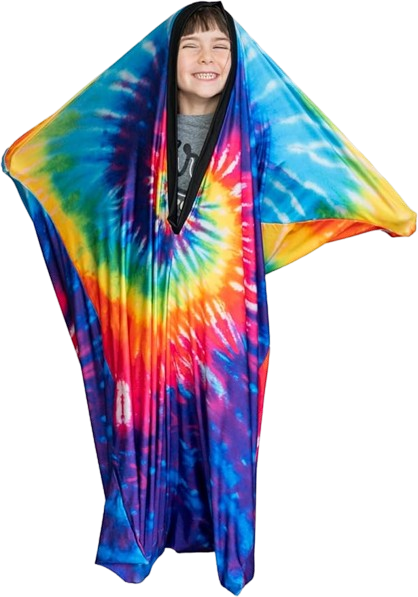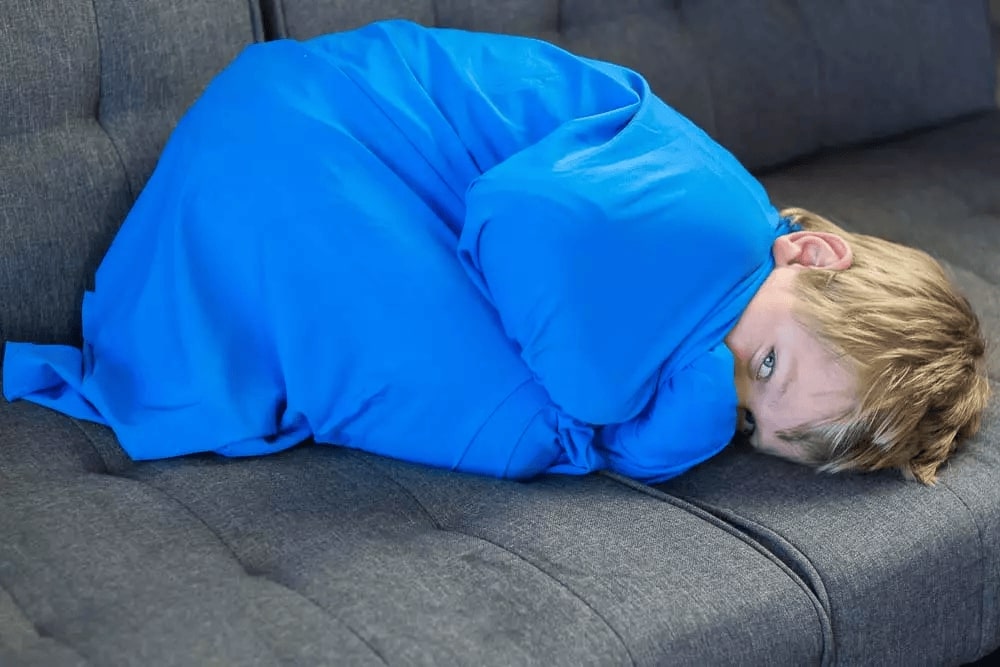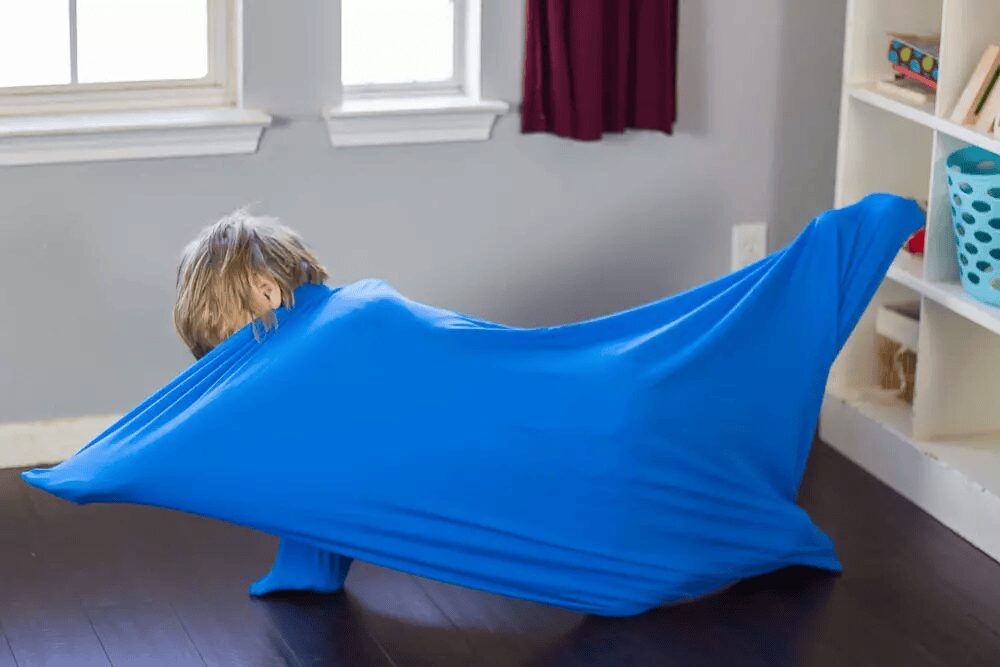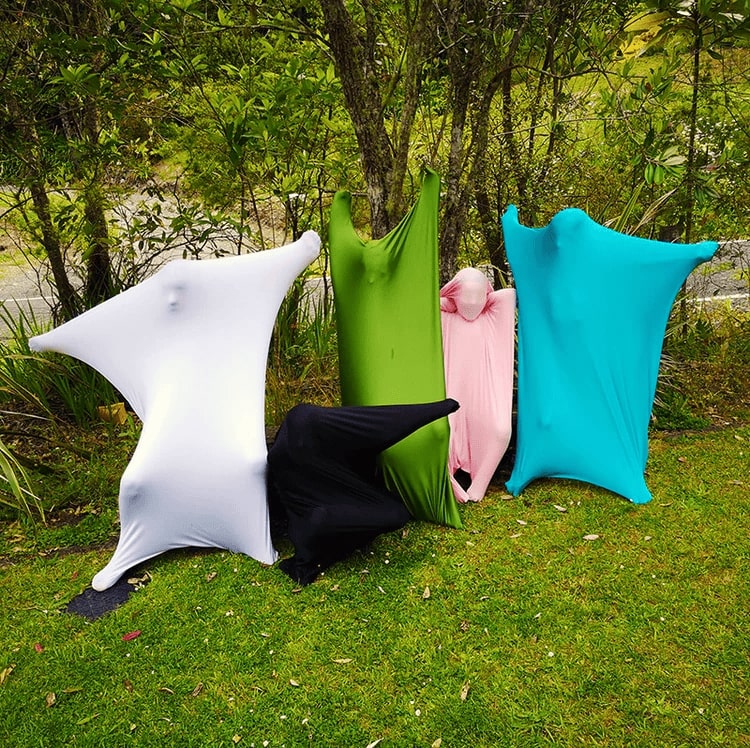Sensor Body Sock: From Daily Stress Relief to Exciting Play
In today's fast-paced world, even young children are not immune to the pressures of modern life. Stress in children can manifest as a result of various factors, including an overwhelming school curriculum, limited time for rest, excessive homework, and, particularly in Europe, a noted lack of parental presence due to busy work schedules. Many children, as young as preschool age, are increasingly showing signs of stress and anxiety. According to several studies, the growing demands of academic life, paired with a decrease in physical activity and playtime, contribute significantly to this mental and emotional strain【source: European Child Psychology Reports】.

In response to these stressors, sensory tools have emerged as essential aids to help children manage their emotions and regulate their bodies. One such tool is the sensory body sock.
What Is a Sensory Body Sock?
A sensory body sock is a flexible, stretchy tool made from elastic fabric (typically a blend of nylon and spandex) that fully encloses the child's body with an opening for the head. It functions similarly to a cocoon or sleeping bag, where a child can climb inside to experience calming deep pressure input. The sensory body sock is commonly used in occupational therapy sessions to help children with sensory processing disorders, particularly those on the autism spectrum【source: American Occupational Therapy Association (AOTA)】.
According to Harkla, a reputable company that specializes in sensory products, the sensory body sock provides deep pressure, also known as proprioceptive input, which helps the child develop body awareness—understanding where their body begins and ends in space. This can significantly benefit children who struggle with sensory regulation, allowing them to maintain a calm and focused state. Harkla explains that body socks are beneficial not only for children with autism but also for those who experience general sensory processing difficulties【source: Harkla】.
Therapeutic Benefits of Sensory Body Socks
The therapeutic effects of a sensory body sock stem from its ability to provide calming pressure throughout the body, helping to promote relaxation and reduce overstimulation. It helps balance the child's tactile and proprioceptive systems by giving feedback to the nervous system. This deep pressure can have a grounding effect on children, making it easier for them to cope with stress, anxiety, or sensory overload【source: The Journal of Occupational Therapy in Pediatrics】.
The sensory body sock has multiple applications. Occupational therapists often use it during therapy sessions to improve motor planning, spatial awareness, and gross motor skills. It can also be used in play-based activities, such as pretending to be different animals, navigating obstacle courses, or practicing yoga poses. For instance, one popular activity is having the child crawl through tunnels while wearing the body sock, enhancing their sense of body position and movement【source: Sensory Integration Network】.

Expert Endorsements
Leading professionals in sensory integration therapy emphasize the benefits of deep pressure input. According to Dr. Lucy Jane Miller, a pioneer in sensory processing disorder research, deep pressure techniques like those provided by sensory body socks help stimulate the proprioceptive system, which can regulate arousal levels, reduce anxiety, and even improve focus. Miller notes that such tools can also aid children in improving their emotional regulation, helping them respond better to stressful situations【source: Miller, L. J. (2014). Sensational Kids: Hope and Help for Children with Sensory Processing Disorder】.
Another expert, Dr. Temple Grandin, a renowned professor and advocate for autism awareness, supports the use of sensory-based tools like body socks to calm the nervous system. Her own experiences with sensory tools have inspired numerous families and therapists to incorporate sensory equipment into daily routines【source: Grandin, T. (2013). The Autistic Brain: Thinking Across the Spectrum】.

Versatility of Use
One of the most compelling aspects of the sensory body sock is its versatility. Not only is it used in clinical settings, but it is also popular in home environments for therapeutic play. The flexibility of the fabric allows for a wide range of activities, from simple static positioning for sensory breaks to dynamic tasks like jumping, crawling, and even dancing. This adaptability makes it an essential tool in any sensory therapy "bag of tricks"【source: Occupational Therapy International】.
You can watch a demonstration of sensory body socks in action by following this link to YouTube, where you'll see children engaging in activities designed to calm and regulate their sensory systems.
Where to Purchase a Sensory Body Sock
High-quality sensory body socks can be purchased from various sources. Harkla, for example, offers sensory body socks that are made to last, with a lifetime guarantee and a commitment to quality. They focus on creating sensory tools that truly benefit children's lives. If you're interested in purchasing a sensory body sock, you can find their product here .
Final Thoughts
In a world where children's stress levels are rising due to academic pressure, overstimulation, and a lack of physical play, sensory tools like the sensory body sock offer a reprieve. They not only help children relax but also assist in developing critical motor and spatial skills. By providing deep pressure input, these tools allow children to regain control over their impulses, emotions, and behavior, ultimately creating a more calm and focused state.
Whether you're a parent, teacher, or occupational therapist, incorporating sensory body socks into a child's routine can significantly improve their emotional and physical well-being.

10 Fun Ways to Use a Sensory Body Sock
Sensory body socks are not only therapeutic but also provide a fun and engaging way for children to explore movement and body awareness. Here are 10 activity ideas that therapists, teachers, and parents can incorporate into playtime or therapeutic sessions:
Play with Position and Movement
Encourage children to walk, crawl, or roll across the room while wearing the body sock. These activities help promote motor planning and spatial awareness.Yoga Poses
Practice yoga poses such as downward dog, tree pose, or child's pose. The resistance of the body sock adds a new level of challenge, helping children stretch and engage their muscles.Motor Activities
Create an obstacle course and challenge children to navigate it while wearing the body sock. This can improve gross motor skills and coordination.Pretend Play
Allow children to use their imagination while wearing the body sock. They can pretend to be animals, superheroes, or even create dramatic play scenarios like being a star or swamp monster.Alphabet Acting
Encourage children to form the shapes of letters with their bodies while inside the sock. This activity can make learning the alphabet more interactive and fun.Games
Play traditional games like Simon Says or Red Light/Green Light while wearing the body sock. This adds an extra sensory challenge to familiar activities.Races
Incorporate the body sock into relay races. Children can use the sock like a sack for sack races, adding excitement to physical activities.Quiet Space
Set up a sensory-safe zone in the child's room with soft pillows, blankets, and the body sock. This can serve as a quiet retreat for children when they need to relax and decompress.Reading Corner
Create a cozy reading nook where children can curl up in the body sock while reading a favorite book. The snug fit of the sock can help them feel secure and focused during quiet activities.Creative Movement
Use the body sock as a flexible prop. Children can stretch the fabric, use it in tug-of-war games, or even tie it in knots for creative movement activities. The possibilities are endless!

For a visual demonstration of sensory body socks in action, check out this YouTube video.
Conclusion
Sensory body socks offer endless opportunities for both structured therapy and creative play. They help children engage their senses, improve motor skills, and relax in a fun, safe environment. Whether used at home, in the classroom, or during therapy sessions, body socks provide unique benefits for children of all abilities.